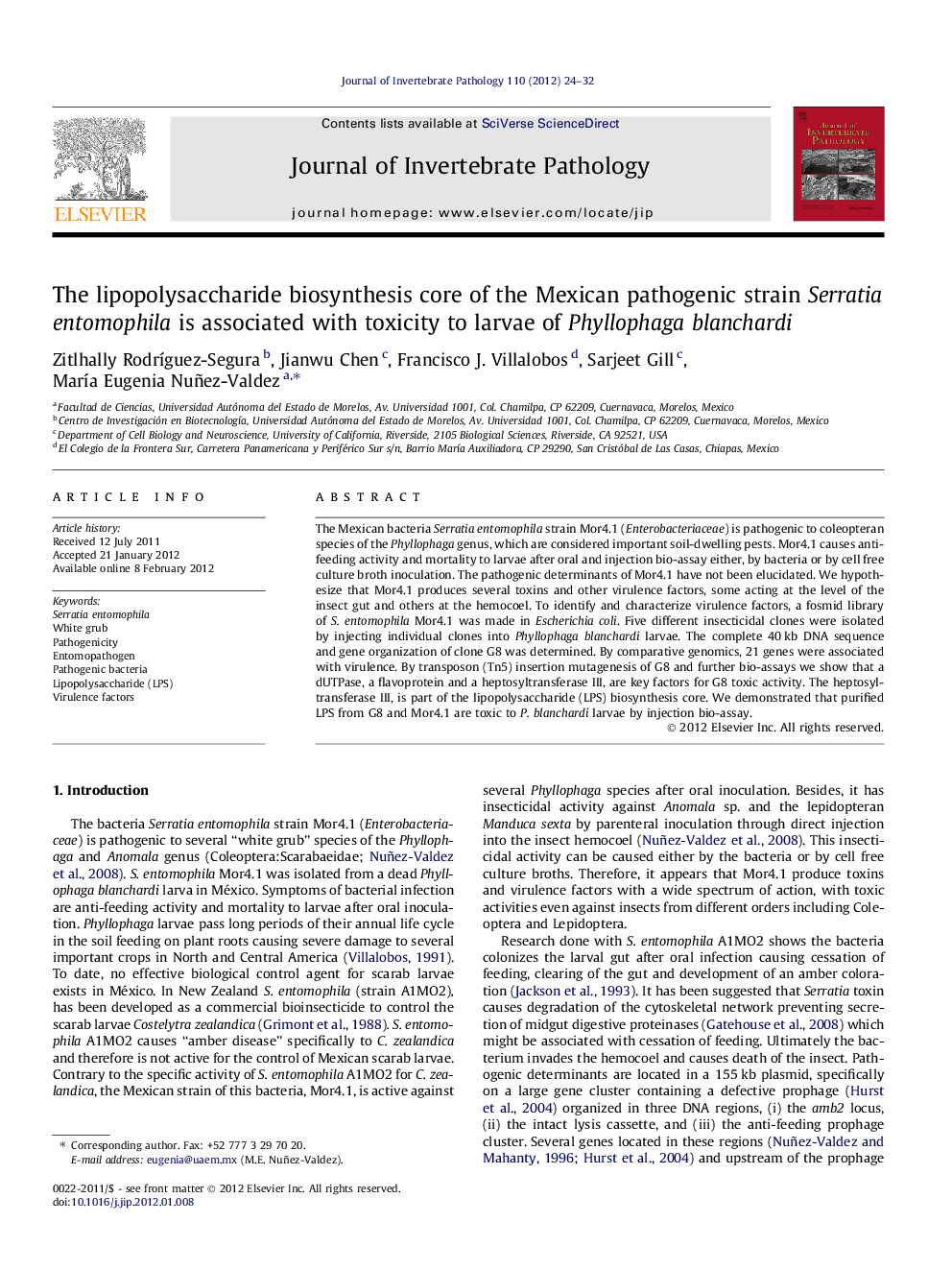| کد مقاله | کد نشریه | سال انتشار | مقاله انگلیسی | نسخه تمام متن |
|---|---|---|---|---|
| 4557919 | 1329909 | 2012 | 9 صفحه PDF | دانلود رایگان |

The Mexican bacteria Serratia entomophila strain Mor4.1 (Enterobacteriaceae) is pathogenic to coleopteran species of the Phyllophaga genus, which are considered important soil-dwelling pests. Mor4.1 causes anti-feeding activity and mortality to larvae after oral and injection bio-assay either, by bacteria or by cell free culture broth inoculation. The pathogenic determinants of Mor4.1 have not been elucidated. We hypothesize that Mor4.1 produces several toxins and other virulence factors, some acting at the level of the insect gut and others at the hemocoel. To identify and characterize virulence factors, a fosmid library of S. entomophila Mor4.1 was made in Escherichia coli. Five different insecticidal clones were isolated by injecting individual clones into Phyllophaga blanchardi larvae. The complete 40 kb DNA sequence and gene organization of clone G8 was determined. By comparative genomics, 21 genes were associated with virulence. By transposon (Tn5) insertion mutagenesis of G8 and further bio-assays we show that a dUTPase, a flavoprotein and a heptosyltransferase III, are key factors for G8 toxic activity. The heptosyltransferase III, is part of the lipopolysaccharide (LPS) biosynthesis core. We demonstrated that purified LPS from G8 and Mor4.1 are toxic to P. blanchardi larvae by injection bio-assay.
Figure optionsDownload as PowerPoint slideHighlights
► The bacteria Serratia entomophila Mor4.1 bring toxicity to Phyllophaga larvae.
► Five different DNA regions participate in toxic activities at the hemocoel of larvae.
► Genes for dUTPase, flavoprotein and heptosyltransferase III are toxicity key factors.
► LPS from Mor4.1 are insecticidal to Phyllophaga larvae by injection bio-assay.
Journal: Journal of Invertebrate Pathology - Volume 110, Issue 1, May 2012, Pages 24–32